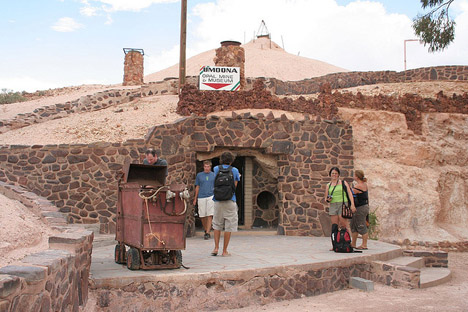Chess City: Elista, Russia
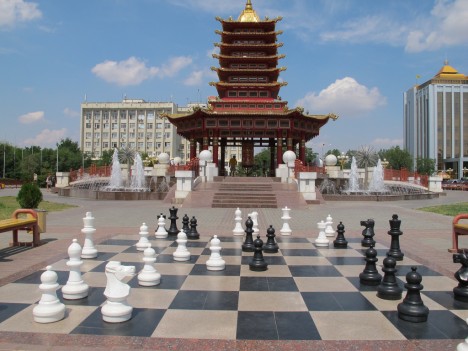
When the president of a Russian state is also the leader of the World Chess Federation, perhaps it’s not too surprising that the capital of that state became known the world over as ‘Chess City’ (photo via unknown buddhist.) Elista, located in the southern state of Kalmykia, contains what can only be described as a temple to the game of chess – but that temple, the City Chess complex, is now decaying as the city faces hard times. Most of the state’s residents live in extreme poverty while some $30 to $50 million was spent on what opponents have described as the president’s fantasies. The central Chess Palace is full of models for grand visions of buildings that were never constructed; plastered with pictures of Steven Seagal and Chuck Norris, the complex is most often used as a wedding venue for middle-class residents. Two giant wooden chess sets on marble boards still stand as a reminder of the president’s dream.
Coober Pedy Opal Mine Town, Australia
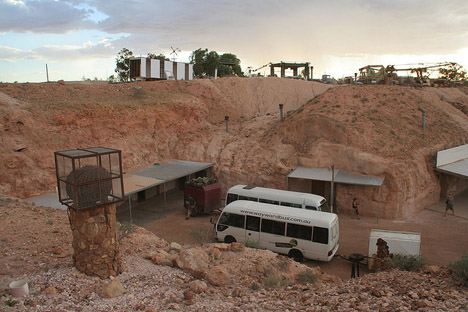
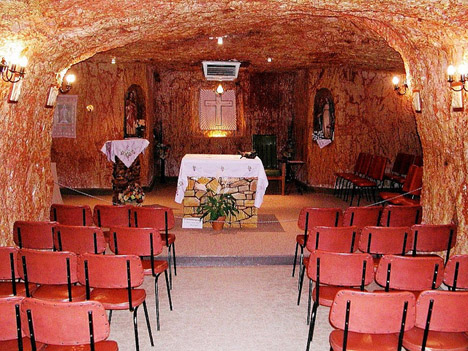
Nearly 2,000 people live in underground caves known as ‘dugouts’ in northern Australia, typically working underground as well in adjacent opal mines. Established in 1915, the almost entirely subterranean town of Coober Pedy (images via Rob Chandler and Werner Bayer) is known as the opal capital of the world with over 70 opal fields. Not only did digging out underground residences just make sense because of the mining connection, but these cave homes are also a cool refuge from the punishing daytime heat. The town includes underground graveyards, churches and shops.
Underground Utopia: Federation of Damanhur
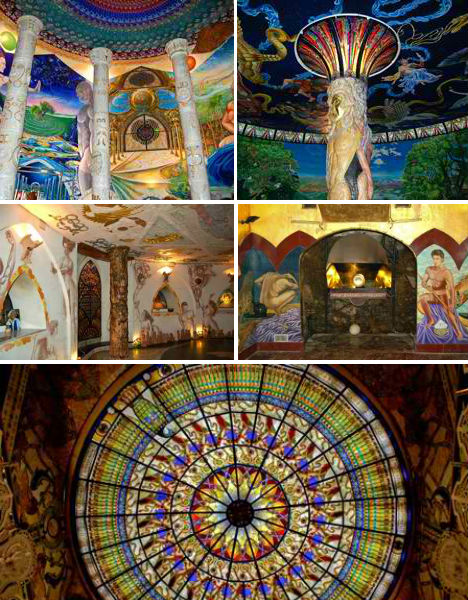
You’d’ never guess that far below a modest home in the northern Alps of Italy lies a vast, intricately decorated system of temples home to devotees of ‘Damanhur,’ an eco-society dedicated to art and spirituality. The Temples of Humankind were painstakingly constructed in secret starting in the 1970s and filled with dazzling murals and stained glass. 57 years old at the time, former insurance broker Oberto Airaudi was consumed with making the visions he’d had since he was a boy into reality. More and more friends joined him in his quest until he built an army of volunteers from around the world. The Italian government finally caught wind of the project and seized the property, but ultimately gave Airaudi and his supporters retroactive permission to build the complex. While the 600 citizens of the Federation of Damanhur don’t actually live in these temples, they do worship there, and the subterranean structure is open to visitors.
